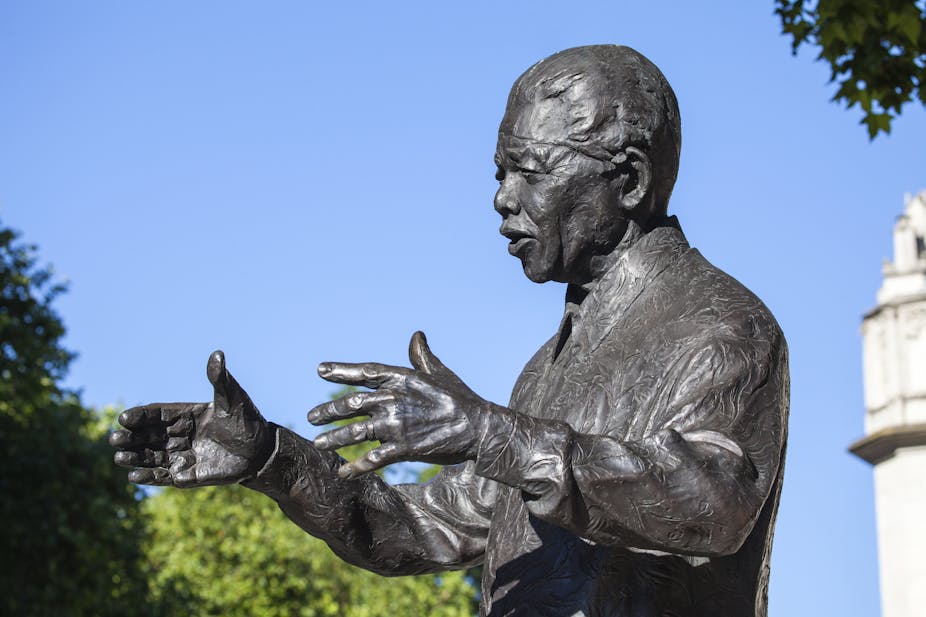Decades of discriminatory policies have left deep scars across South Africa’s social landscape, creating one of the most unequal and polarised societies in the world. It’s been 22 years since the party of Nelson Mandela came to power with a promise of reversing the racial deprivations. How successful has the ANC been?
Our study examines the enduring spatial and racial dimensions of poverty and deprivation in South Africa. We took a multidimensional approach to assess progress. This enabled us to reflect the reduction in deprivation attributable to the improved affordability and expanded coverage of government services.
Previous studies have tracked poverty trends over segments of the post-apartheid period. None have considered multidimensional deprivation over the past two decades. We developed a poverty index with nine dimensions of deprivation. These included education, employment, dwelling type, overcrowding, access to electricity, water, telephone, sanitation and refuse collection.
Using this multidimensional index as well as census data our analysis found that there was a remarkable improvement in deprivation levels between 1996 and 2011. There is evidence of redress taking place. But it also finds that geography and race continue to play an important role in explaining patterns of deprivation in the post-apartheid South Africa.
History of deprivation
During the colonial and apartheid era the government restricted the geographical settlement choices and freedom of movement of black South Africans. These policies were also accompanied by large regional discrepancies in government spending, entrenching the association between place and poverty.
The resulting strong racial dimension and distinct spatial footprint of poverty have impeded post-apartheid change and mobility by magnifying the social distance between the deprived and the affluent. In South Africa, deprived households are largely black or coloured and tend to live on the periphery of the cities and towns.
The racial divide is further deepened by its association with cultural and language divides. In many countries in the world dimensions such as race, income and geography tend to coincide and overlap. But these cuts run far deeper in South African society where the divisions were engineered by discriminatory policies and legislation.
Investment to improve equity
The South African government has invested significant effort in improving equity. Interestingly the earliest reforms predated the official end of apartheid. In the 1970s the apartheid government started to equalise social spending by race and area.
More policy reversals followed in the 1980s. Further reforms were introduced following the official fall of apartheid in 1994.
Aiming to redress apartheid inequalities, Nelson Mandela’s post-apartheid government reorganised the provincial structures. The new government decentralised the bureaucracy and approved budgetary shifts to favour weaker and more deprived provinces.
These initiatives radically improved access to key services. Between 1996 and 2011:
The share of individuals with access to electricity improved from 44.5% to 74.6%;
Access to clean water increased from 57.4% to 74.6%;
Access to pit latrines or flush toilets improved from 81.9% to 92.8%;
Access to formal housing has risen from 63.5% to 79.8%; and
The share of individuals with access to regular refuse removal increased from 48.1% to 61.8% over the same period.
Despite these strides inequality remains a deeply entrenched feature of South Africa’s social landscape. Race and geography still serve as markers of deprivation and poverty.
Analysis of the 1996 and 2011 Census also confirms trends reported elsewhere that shows that there has been sluggish growth in employment. This highlights that social mobility is constrained.
Poverty and deprivation by race and area
South Africa has nine provinces. Levels of deprivation has narrowed between them in the last 20 years. Understanding how this happened provides an important window into understanding the enduring legacy of apartheid.
Two decades ago there was a notable divide in average deprivation levels between three provinces – the Western Cape, Gauteng and the Northern Cape – compared with Limpopo and the Eastern Cape. The Western Cape, Gauteng and the Northern Cape did not include significant parts of apartheid era “homelands”, areas assigned for settlement of black South Africans along ethnic lines. Homelands were characterised by inadequate public service delivery and a lack of infrastructure during the apartheid period. They were marked by extreme poverty and lagged behind the urban “townships” (suburbs often on the periphery of cities that were designated for black settlement during the apartheid period).
Our analysis provides encouraging evidence of effective redress in the post-apartheid period. The indices show a sharp fall in deprivation levels across all provinces. Additionally, we see evidence of catching up and a narrowing of the geographical gap. Three of the poorest provinces, Eastern Cape, Limpopo and the Free State, exceeded the average improvement in the index.
It is encouraging that there has been progress across all dimensions and well as geographies. While aggregate deprivation is still high, deprivation in terms of the dimensions we measured has improved most in those that were neglected historically. There is a narrowing of the gap between the poorest and most affluent provinces over this time period.
Still a long way to go
Despite progress the legacy of apartheid remains highly visible in the patterns of deprivation with enduring gaps particularly between black and white and between former “homeland” provinces and others.
The colour divide is very marked. White South Africans are unlikely to suffer much deprivation regardless of which provinces they reside in. In contrast, black South Africans experience multiple forms of deprivation that varies considerably by province.
Although there has been progress in the post-apartheid era, the enduring impact of race and race-related characteristics remain. This work resonates with the widespread frustration with the current system, manifesting in protest action. Much remains to be done and we need to have a public conversation about how we accelerate transformation and social justice.

